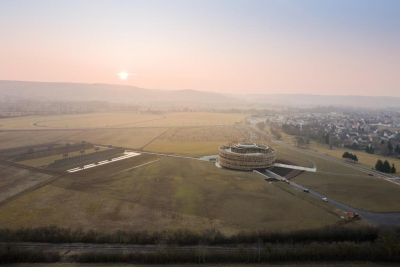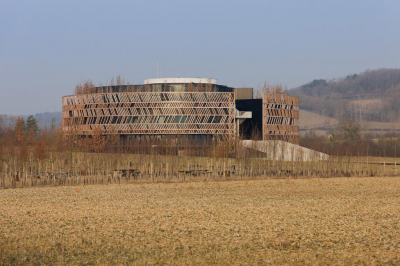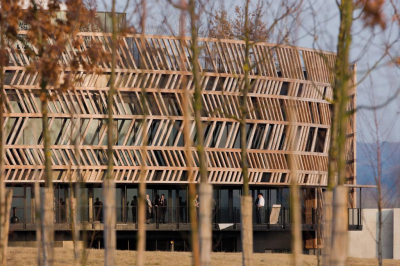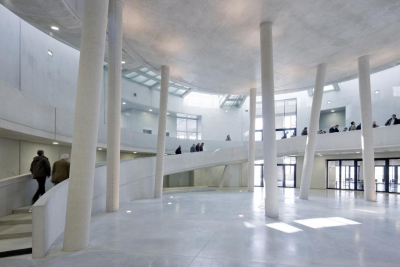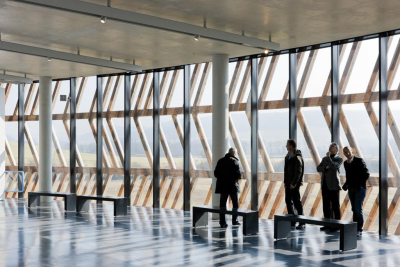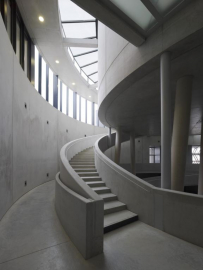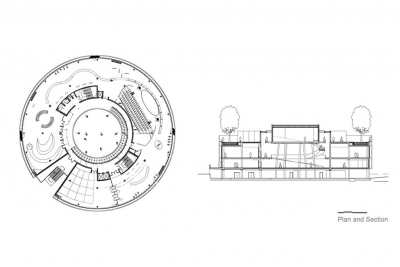Alesia Museum and Archaeological Park
This project marks an archaeological site in central France and commemorates a historic battle between Julius Caesar and the Gauls in 52 B.C. The new museum recreates battlements and earthworks and provides historical interpretation for the area, which consists of several sites spread over a valley containing a small medieval town.
The programme required two separate but related structures. The first building is the interpretive centre located at the Roman position in the fields below the town. A future museum will be located at the position at the top of the hill above the town that was occupied by the Gauls during the siege. The local authorities and historians wanted both buildings to appear as unobtrusive as possible in their respective contexts. Visitors can view the surrounding landscape much as the Gauls did or look onto reconstructions of the Roman battlements. A keen awareness of the surrounding landscape as it pertains to the historic battle is integral to the visitors experience.
Because the interpretive centre exists on a battlefield, the architecture was designed to engage with its surroundings in a more direct way than most buildings. The roof is planted with approximately 300 birch and oak trees in a landscaped green roof, designed to place the building in dialogue with the landscape, and to appear as unobtrusive as possible when viewed from the historical position of the Gauls on the plateau a short distance away. The facade of the building is a lattice of Larch wood, a renewable building material native to the region. The facade recalls the fortification techniques of the Roman army, which would have made use of available materials. The wood filters light and reduces heat gain from the large glass facades, which are important for views onto the historical battlefields.

